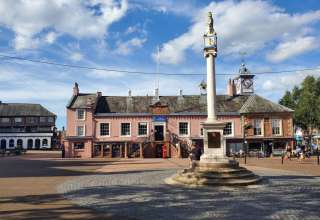This is the third installment of Ed Boitano’s series on Pilgrimages. In the second installment, Places I’ll Remember, Part 2, Boitano covered Vincent van Gogh’s final days in Auvers-sur-Oise, the Leaning Bell Tower of Pisa and Princess Grace in Monaco. Still quarantined at home in Southern California, Boitano is doing even more reminiscing these days. No doubt there will be further remembrances, games of Solitaire and reruns of Better Call Saul in his future.
Henry VIII and Hampton Court Palace
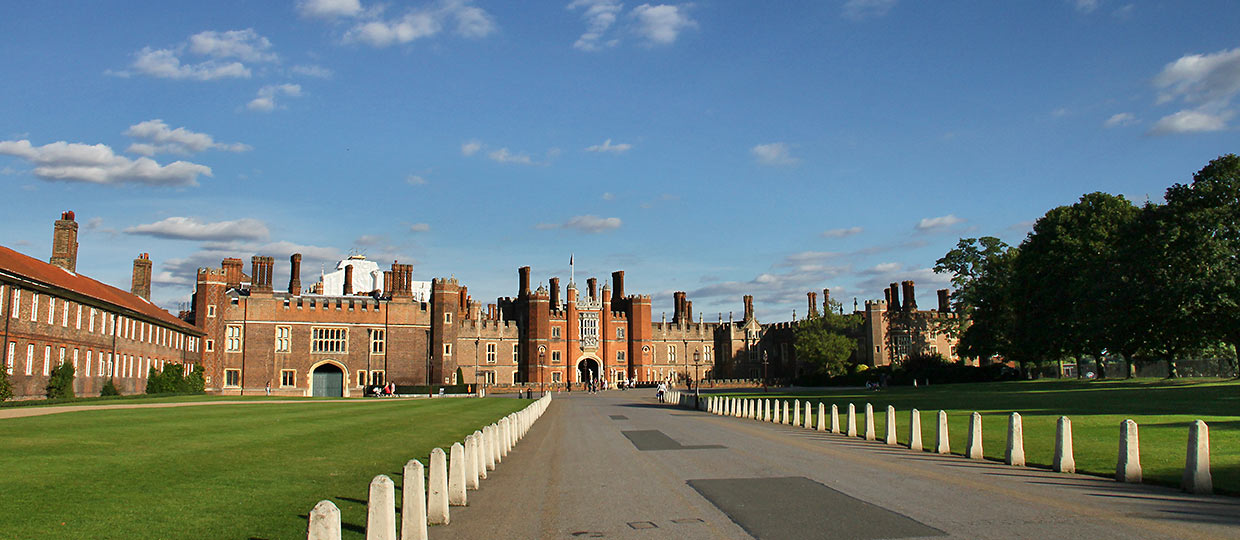
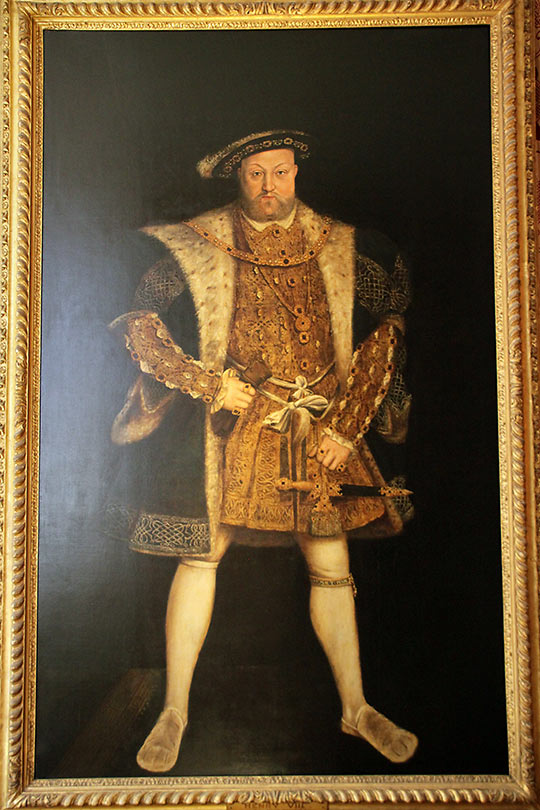
When one invokes images of English King Henry VIII they’re generally of an obese and egoistical king, who was no stranger to the royal casting couch, despite his marrying six of his conquests. But this is not the Henry of early years; an avid hunter and sportsman, a helpless romantic, sublime dancer, and highly educated man who actually composed his own songs and played numerous musical instruments. Henry was in born in 1491, the second son of King Henry VII. He was once a tall and slender man, considered physically attractive and charismatic by many. But a tragic jousting accident led to a life-long, unhealed wound on his leg, ending his physical days of sport, dancing, and hunting. Plus, he was confronted with daily excruciating pain that added greatly to his to his discomfort in walking and gruff demeanor. No English King, though, was more responsible for laying the groundwork for making the British Empire the world’s greatest power, lasting for two-hundred years, with flags flying over 40% of the globe.
With the death of his Henry’s elder brother, he became heir to the English throne, but was considered unfit to rule at the age of 10. Cardinal Thomas Wolsey was awarded the title of Lord Chancellor, and stepped in to rule the nation and amassed a considerable fortune. Sparing no expense, Wolsey built the original Tudor palace, Hampton Court Palace, along the Thames, then on the outskirts of London. It was considered the finest palace in England. Henry was soon anointed king, and, in the Tudor tradition, married the widow of his brother, Katharine of Aragon from Spain.
When Katharine, now in her 40s, was unable to produce a male heir, he turned his eyes on one of Katharine’s ladies-in-waiting, Anne Boleyn. He instructed Wolsey to ask Pope Leo X to annul his first marriage, but when Wolsey failed to succeed in this impossible task, Henry broke with the church and married the now pregnant Anne Boleyn. Henry was excommunicated from the church, and the English reformation began where he appointed himself as head of the Church of England.
Hampton Court attracted Henry’s attention, and Woolsey, who had fallen out of favour, wisely gifted him the palace. Henry was a lavish spender, always in need of income, so he ordered that 800 well-funded monasteries be disbanded and their lands and treasures taken for the crown. No expense was too much for Henry as he began to enlarge Hampton Court. He already owned over sixty houses and palaces, yet few were large enough to hold or feed his assembled court of 1,000 subjects. A vast kitchen was built, quadrupling the original size. The renovation of the palace followed the design by Wolsey’s Gothic Tudor and Baroque architectural-style, adorned with Renaissance ornaments.
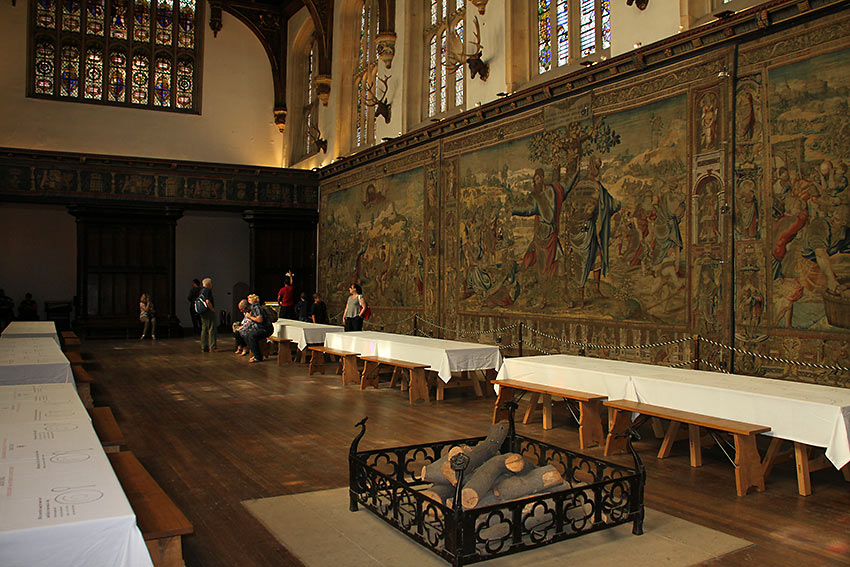
A visit to Hampton Court today is a step back into history. I was overwhelmed by its scope and size, and could easily have spent countless hours there. At its gatehouse there’s the astronomical clock, made for Henry VIII, and 30 or so suites used for the grandest visitors, with the opulence depending on the status of the occupant.
Once inside, I was confronted with the lavish use of half-timber, rectangular and bay windows, carved wood paneled walls, lavish moldings and design. Two staircases lead to the 106 ft. long and 40 ft. wide Great Hall banquet room where Henry would ‘play’ the role of a Renaissance monarch. The hall features a spectacularly decorated hammer-beam, and walls covered by Henry’s most treasured tapestries. I was pleasantly surprised to find everything so accessible, making it easy to become part of the experience. I felt like a monarch by literally sitting at Henry’s place at the grand table, or laying down in a large sleeping room, which I assumed was for less distinguished guests, for there was only straw on the floor as bedding.
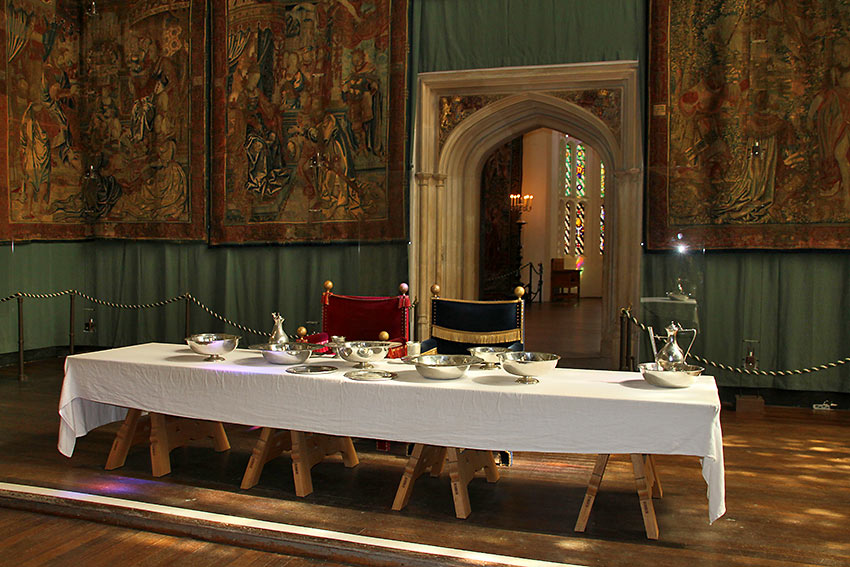
Henry used Hampton Court to demonstrate magnificence and power through lavish banquets, extravagant court life and expensive art. By the 1530s, Hampton Court became a palace, a hotel, a theatre and a vast leisure complex. It was Henry’s favorite royal residence, and only two of his surviving ones.
Mozart – Geburtshaus & Museum – Salzburg, Austria
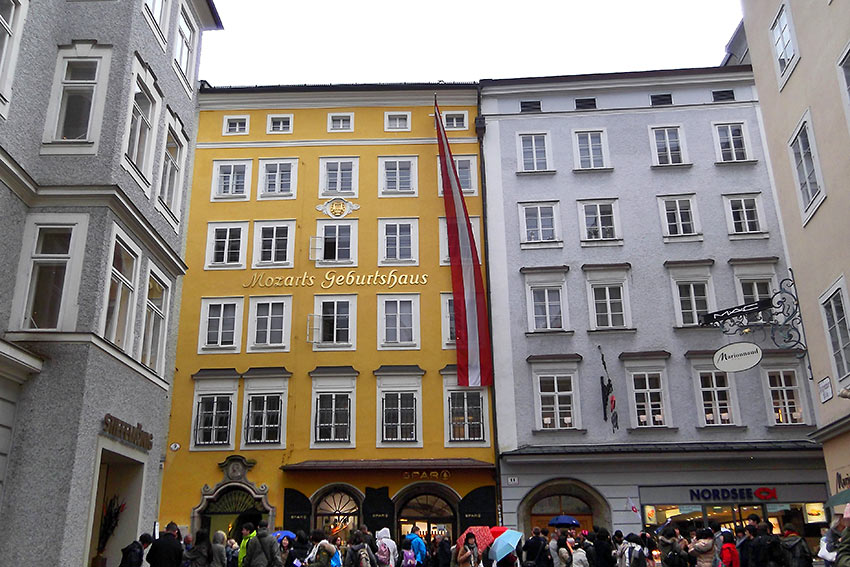
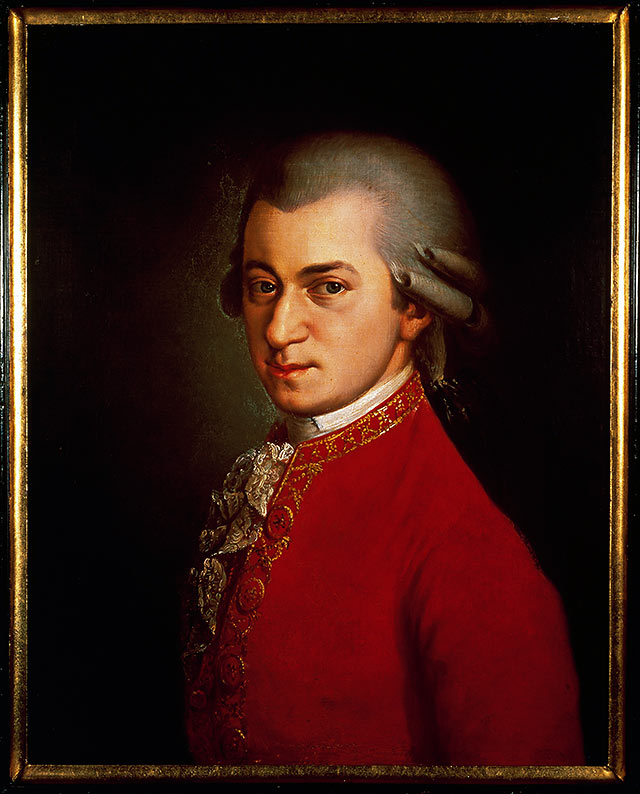
Johann Chrysostom Wolfgang Amadeus Mozart could read and compose music, plus play the violin and piano, when he was five years old. Born into a musical family in Salzburg, Austria (then the Holy Roman Empire), he had a unique ability for imitating music, which first became evident when he recited a musical piece by simply observing his father conducting a lesson to his older sister. This led to a childhood on the road, where the young prodigy performed before many of the royal courts of Europe. At 17, no longer a child prodigy, he returned to Salzburg and accepted a post as a court musician, but was frustrated with the poor salary and lack of opportunities. His early travels and uncanny memory, though, had provided him with a plethora of musical styles and experiences, from which he used to create his own compositional language. He eventually settled in Vienna where he achieved fame, and is now considered one of the most influential and prolific composers of the Classical era. Mozart was never happy with his career in Salzburg as he experienced little fame; however, the city today is a Mecca for all things Amadeus. An essential stop is a visit to Mozart’s Geburtshaus (birthplace).
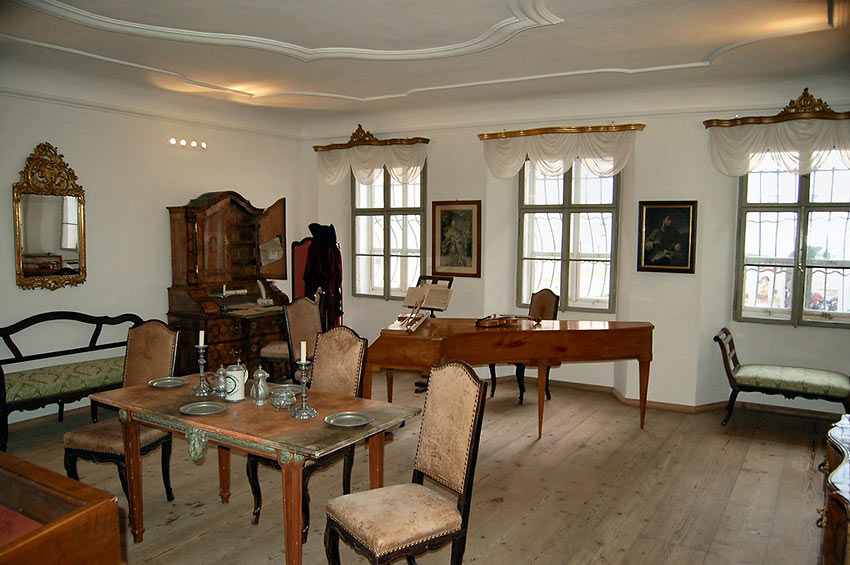
This is the house where his parents lived for 26 years and young Mozart was educated. Now a three-story museum, it is filled with original instruments – Mozart’s childhood violin, concert violin, clavichord and pianoforte – portraits, family letters, and furniture and objects of daily use, including Mozart’s very cradle. I strongly recommend a private tour, where guides are walking encyclopedias about his life. I asked why were Mozart’s famous eyes so bulging? He didn’t eat his vegetables!
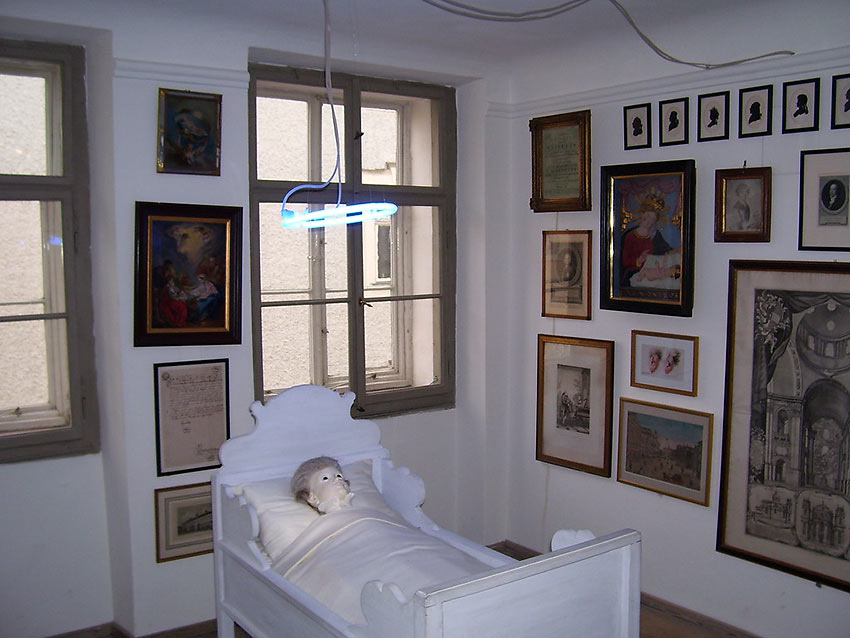
Another Mozart must is a dinner concert at the famous Stiftskeller St. Peter, considered the “oldest restaurant in Europe.” The concert is performed by candlelight between food courses, prepared with traditional recipes from Mozart’s era. Period-costumed musicians, including two opera singers, perform arias from “Don Giovanni”, “Le Nozzi di Figaro” and “The Magic Flute.” Dining under magnificent chandeliers and surrounded by 18th century décor, not to mention the stirring music, is like being transported back to the magical times of Mozart.
The setting in Salzburg, itself an enchanting fairytale of a city, only enhances the experience. A UNESCO World Heritage Site, the city’s wealth was built on the mining of salt (‘salt’ translates to ‘salz’ in German, hence the city’s name). The west bank of the Salsas River borders the Alborg Historic Centre (known to locals as the Altadt), and is where most of the attractions are located. The fortress Festung Hohensalzburg towers over stunning baroque architecture and narrow cobblestone streets where smartly dressed locals sit in elegant coffee houses, noshing on delicate pastries and Mozartkugln (Mozart chocolate balls).
Edvard Grieg – Troldhaugen & Grieg Museum – Bergen, Norway
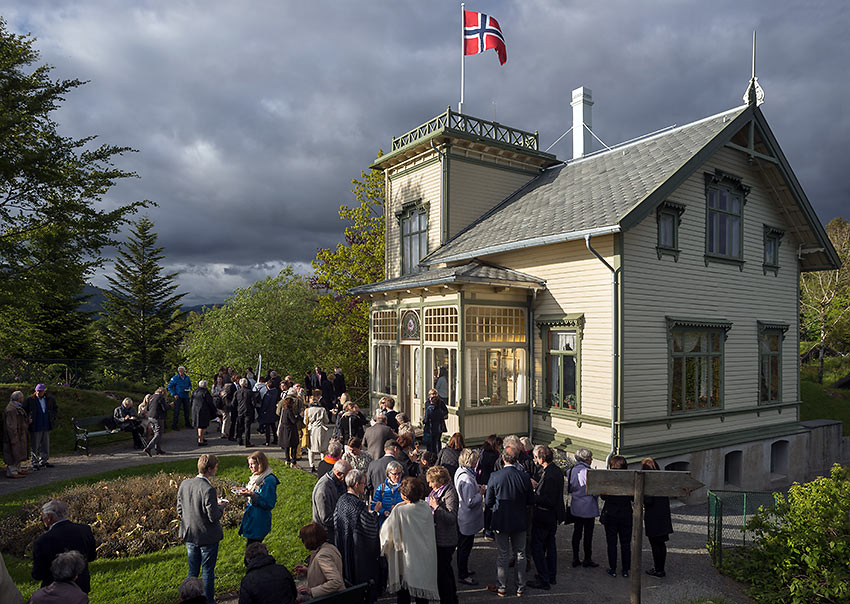
Despite his diminutive 5 ft frame, Norwegian composer Edvard Hagerup Grieg was a towering rock star long before the expression existed. Born into a successful Bergen merchant family in 1843, his life dramatically changed when violin virtuoso Ole Bull recognized his talent and also introduced him to the treasures of Norwegian folk music. Grieg studied the masters abroad, but dreamed of reprieves to his beloved Norwegian countryside – a pattern which continued after he became a world-renowned composer. Grieg and his wife built a home on Lake Nordås on the edge of Bergen, which he called his best opus so far. Christened Troldhaugen, the Victorian villa featured a tower, flag pole and rooftop vegetable garden. It soon became a center piece for Bergen’s artistic community and visiting dignitaries. Grieg loved the attention, but needed quiet to work, and built a composer’s hut by the lake. Grieg died in 1907 of chronic exhaustion. But today his legacy lives on at Troldhaugen – a living museum consisting of the Edvard Grieg Museum, the Villa, the Composer’s Hut, Concert Hall and Edvard Grieg´s tomb.
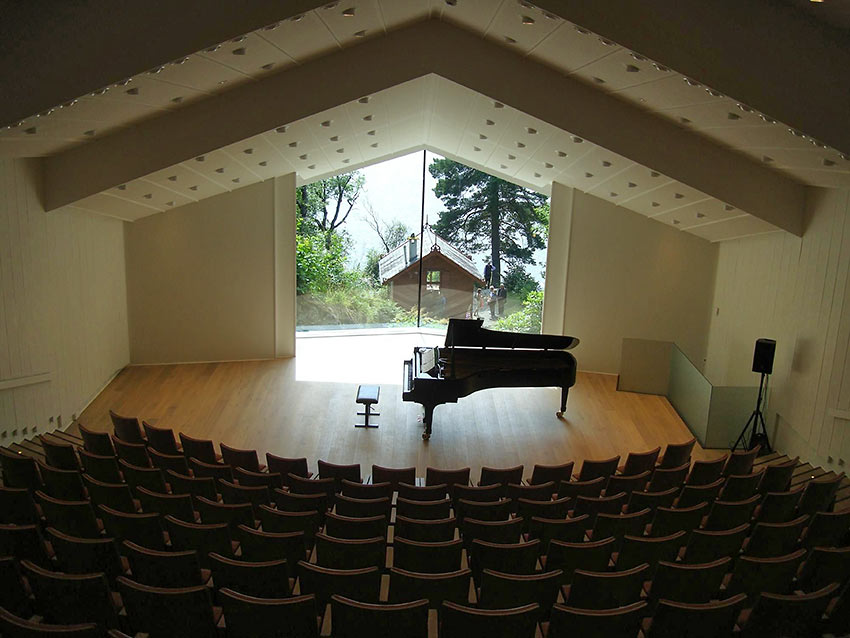
For me the highpoint of a visit to Troldhaugen was a recital at the concert hall, which is discreetly built right into the grounds, complete with sod roof. The floor-to-ceiling windows behind the stage overlooks the composer’s hut where Grieg would work, superstitiously sitting on a stack of sheet music by Beethoven so that he could reach the piano. At the end of each day, he would leave a note: “If anyone should break in here, please leave the musical scores, since they have no value to anyone except Edvard Grieg.”
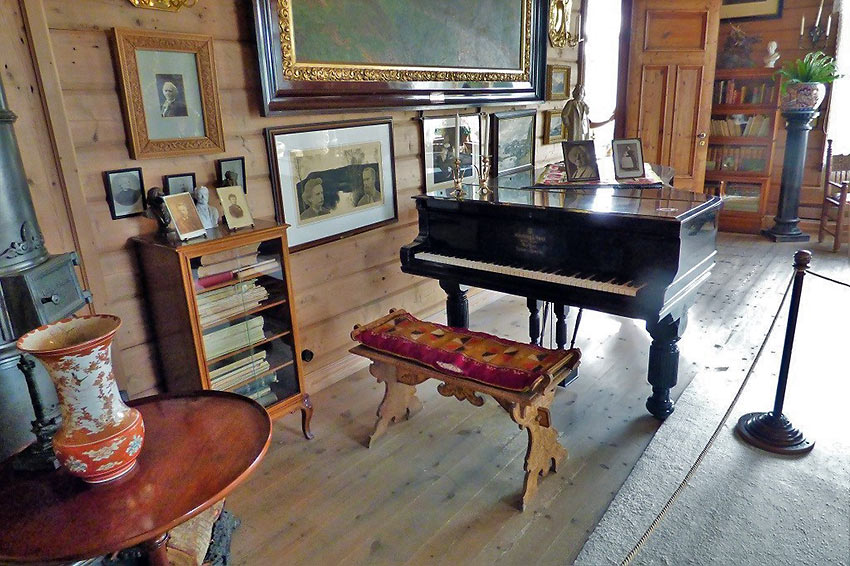
It is essential that you spend at least two days in Bergen, a UNESCO World Heritage Site. Bergen boasts endless tourist attractions, and the Bergen Tourist Card is an important component to your tour of this historic harbor town. The price allows you free or reduced- price admittance to the Bergen Art Museum, Fantoft Stave Church (a medieval wooden cathedral), harbor boat tour, Bergen Castle, and St Mary’s Church. Wander through the harbor fish market and down the wooden streets of the historic warehouse district. A fish buffet should be on everyone’s list for a sampling of Bergen’s world-famous fish soup, gravlaks (cured Atlantic salmon), fish cakes and hearty breads, all washed down with the city’s own Hansa beer.
